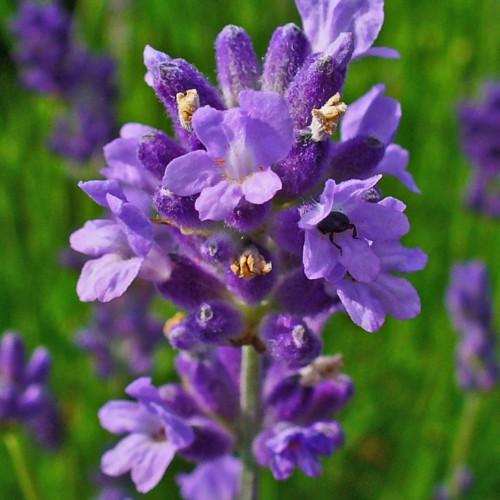
English lavender
Lavandula angustifolia
Cycle:
Herbaceous Perennial
Watering:
Minimum
Hardiness Zone:
5 - 8
Flowers:
Flowers In Summer
Sun:
Full sun
Soil:
Rocky , gravelly , dry, Well-drained
Fruits:
Fruits In Autumn Ready In Summer
Leaf:
Yes
Growth Rate:
Moderate
Maintenance:
Moderate
Drought Tolerant:
Yes
Salt Tolerant:
Yes
Care Level:
Medium
watering
English lavender (Lavandula angustifolia) should be watered deeply, but infrequently. They should be given approximately 1.5-2 inches of water a week, but only when the soil is dry to the touch. This can be checked by sticking your finger into the soil up to your first knuckle; if the soil is dry, it is time to water. If the soil is still moist, hold off on watering for a few days. As the temperatures begin to become warm, English lavender should be watered once every 3-4 days. If the temperatures become extreme, avoid watering the plant during the hottest part of the day (i.e., noon through 4 pm). The best time to water is in the early morning or evening when it is cooler. Avoid overwatering or allowing excessive water to collect in the soil, as this can cause the roots to rot.
sunlight
English Lavender (Lavandula angustifolia) grows best in direct sunlight for 6-8 hours each day. The ideal light situation for English Lavender is a full sun exposure from morning until late afternoon, which allows it to receive the maximum amount of ultraviolet radiation for photosynthesis and strong growth. This type of lavender can also tolerate light shade, but blooms best with a full sun exposure. It is important to remember not to leave English Lavender in direct afternoon sunlight, as the intense heat can cause it to dry out or burn. English Lavender also fares better in sunny climates than in areas with partial to complete shade.
pruning
English Lavender (Lavandula angustifolia) should be pruned twice per year, once in late spring and once in early winter. In the late spring, once the plant has finished flowering, prune about 1 third of the existing branches and stems. Make sure you cut each 1 back to a healthy side-shoot. This will encourage the lavender to produce new growth for the following season. In the early winter season, once the weather has cooled, prune back overgrown stems by half their length. This will ensure that the lavender remains within the desired size, as well as creating new branches for flowering the following year. Be sure to clean your tools with rubbing alcohol before and after you prune to reduce the chance of spread of disease.
